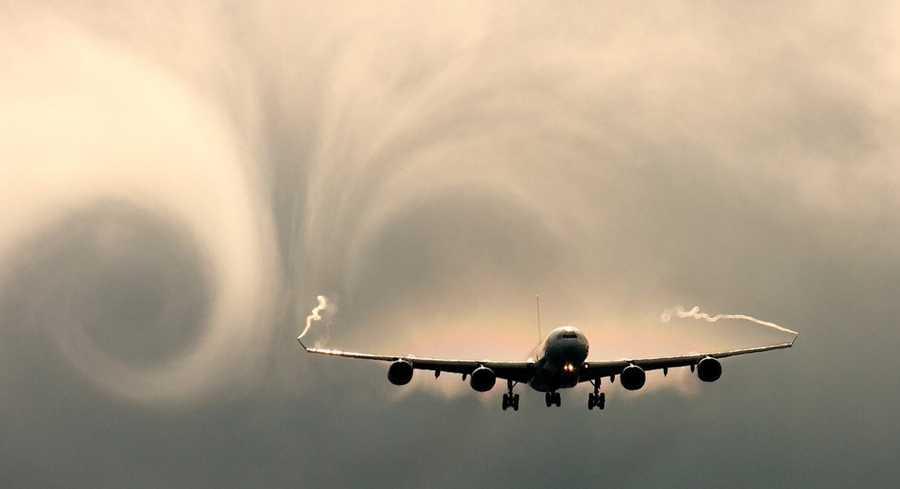How planes work | the science of flight
Curated from: explainthatstuff.com
Ideas, facts & insights covering these topics:
12 ideas
·939 reads
5
Explore the World's Best Ideas
Join today and uncover 100+ curated journeys from 50+ topics. Unlock access to our mobile app with extensive features.
How planes fly
Planes can fly quite easily without engines, as gliders (planes without engines), paper planes, and gliding birds show us.
A plane's engine is designed to move the plane forward at high speed. The wings move a plane upward. At high speed, the air flows fast over the wings and throws the air down toward the ground, generating an upward force, or lift. The upward force overcomes the plane's weight and keeps it in the sky.
35
233 reads
Airplanes: How wings make lift
Wings make lift by changing the direction and pressure of the air that the plane comes into contact with as the engines push the planes through the sky.
32
147 reads
Airplanes: Explaining pressure differences
Most aeroplane wings are curved on the upper surface and flatter on the lower surface, making a sectional shape, named an airfoil.
- As a curved airfoil wing flies through the sky, it deflects the air and changes the air pressure above and below it.
- The air pressure changes because the air that flows over the curved upper surface wants to move in a straight line, but the curve pulls the air around and back down, causing the air to stretch out into a bigger volume, lowering the pressure.
- The pressure of the air under the wing increases for the opposite reason.
- The difference in air pressure between the upper and lower surfaces causes a difference in air speed. When they arrive at the tail end of the wing, the molecules of both will be speeding downward, producing lift.
31
71 reads
Downwash (downward moving draft)
The second aspect of making lift:
- According to Isaac Newton's third law of motion, if air gives an upward force to a plane, the plane must provide an equal and opposite downward force to the air. That means that the plane generates lift by using its wings to push air downward behind it.
- The wings are tilted back very slightly, so they hit the air at an angle of attack. The angled wings push down the varied airflow from above and below the wing to create lift.
The pressure difference that a wing creates and the downwash of the air behind it generate the same effect: The angled airfoil wing creates a pressure difference that causes a downwash and produces lift.
29
67 reads
Airplanes: How much lift you can make
Air that flows at a certain angle (generally 15 deg) over the top and bottom of a wing follows the curve of the wing surfaces very closely. But as the angle increases (the angle of attack), the smooth airflow behind the wing becomes more turbulent and reduces the lift.
- Planes can fly without airfoil-shaped wings. What is crucial for a plane is the angle of attack.
- The bigger the wings, the more lift they create.
- But small wings can also generate a great deal of lift if they move fast enough. Extra lift at takeoff is produced with flaps on the wings to push more air down.
- Lift and drag vary with the square of your speed: If the place goes twice as fast relative to the oncoming air, its wings produce four times as much lift and drag.
30
53 reads
Wing vortices
A plane throws the air down behind it by making a spinning vortex - a kind of mini-tornado.
Most of the vortex is moving downward, but not all. There's a huge draft of air moving down in the center, but the air also swirls upward on either side of the wingtips, reducing lift.
31
94 reads
How planes steer
When you change something's direction of travel, you change its velocity - the speed it has in a particular direction. A change in direction always means a change in velocity and acceleration.
Newton's laws of motion state that you can only change the speed of something or change its direction of travel by applying a force to it.
29
53 reads
Airplanes: The centripetal force
Another way to look at steering is to think of it as stopping something from going in a straight line and going in a circle. That means you have to give it a centripetal force.
Things that move in a circle always have something acting on them to give them a centripetal force. For example, if you're on a skateboard, you can tilt the deck and lean over, so your weight helps to provide centripetal force.
29
43 reads
Airplanes: Steering in theory
If you're in a plane and steering around a circle, the centripetal force comes from leaning into a curve, just like a cyclist leans into a bend.
Steering involves banking, where the plane tilts to one side causing the one wing to dip. The plane's overall lift is tilted at an angle, making some of the lift act sideways. This sideways part of the lift provides the centripetal force that makes the plane go around in a circle. But turning the plane in a circle will make it lose lift and altitude, unless the pilot uses the elevators to increase the angle of attack to cause lift again.
31
55 reads
Airplanes: Steering in practice
You steer something flying through the air at high speed by making the air flow in a different way past the wings.
Planes are moved up and down, steered from side to side, and made to stop by a complex collection of moving flaps called control surfaces on the leading and trailing edges of the wings and tail. They are called ailerons, elevators, rudders, spoilers, and air brakes.
29
36 reads
Experiment to understand control surfaces
- Build a basic paper plane that flies in a straight line.
- Cut or rip the back of the wings to make some ailerons.
- Tilt them up and down and see what effect they have in different positions.
- Tilt one wing up and the other down and see what difference that makes.
- Try making a new plane with one wing bigger than the other, or heavier by adding paperclips.
- A paper plane can be steered by making one wing generate more lift than the other.
30
36 reads
Key parts of planes
- Fuel tanks: The fuel is safely packed inside the plane's enormous wings.
- Landing gear: Planes take off and land on wheels. The wheels are retracted into the undercarriage by hydraulic rams to reduce drag when the plane is in the sky.
- Radio, radar and satellite systems are essential for navigation.
- Pressurized cabins: Air pressure falls with height above the Earth's surface. Planes have pressurized cabins with heated air steadily pumped so people can breathe adequately.
30
51 reads
IDEAS CURATED BY
Lise Everett's ideas are part of this journey:
Learn more about personaldevelopment with this collection
How to build trust in a virtual environment
How to manage remote teams effectively
How to assess candidates remotely
Related collections
Similar ideas
8 ideas
How Boomerangs Work
entertainment.howstuffworks.com
7 ideas
5 ideas
Your Pilot Isn't Actually Flying Your Plane
cntraveler.com
Read & Learn
20x Faster
without
deepstash
with
deepstash
with
deepstash
Personalized microlearning
—
100+ Learning Journeys
—
Access to 200,000+ ideas
—
Access to the mobile app
—
Unlimited idea saving
—
—
Unlimited history
—
—
Unlimited listening to ideas
—
—
Downloading & offline access
—
—
Supercharge your mind with one idea per day
Enter your email and spend 1 minute every day to learn something new.
I agree to receive email updates

